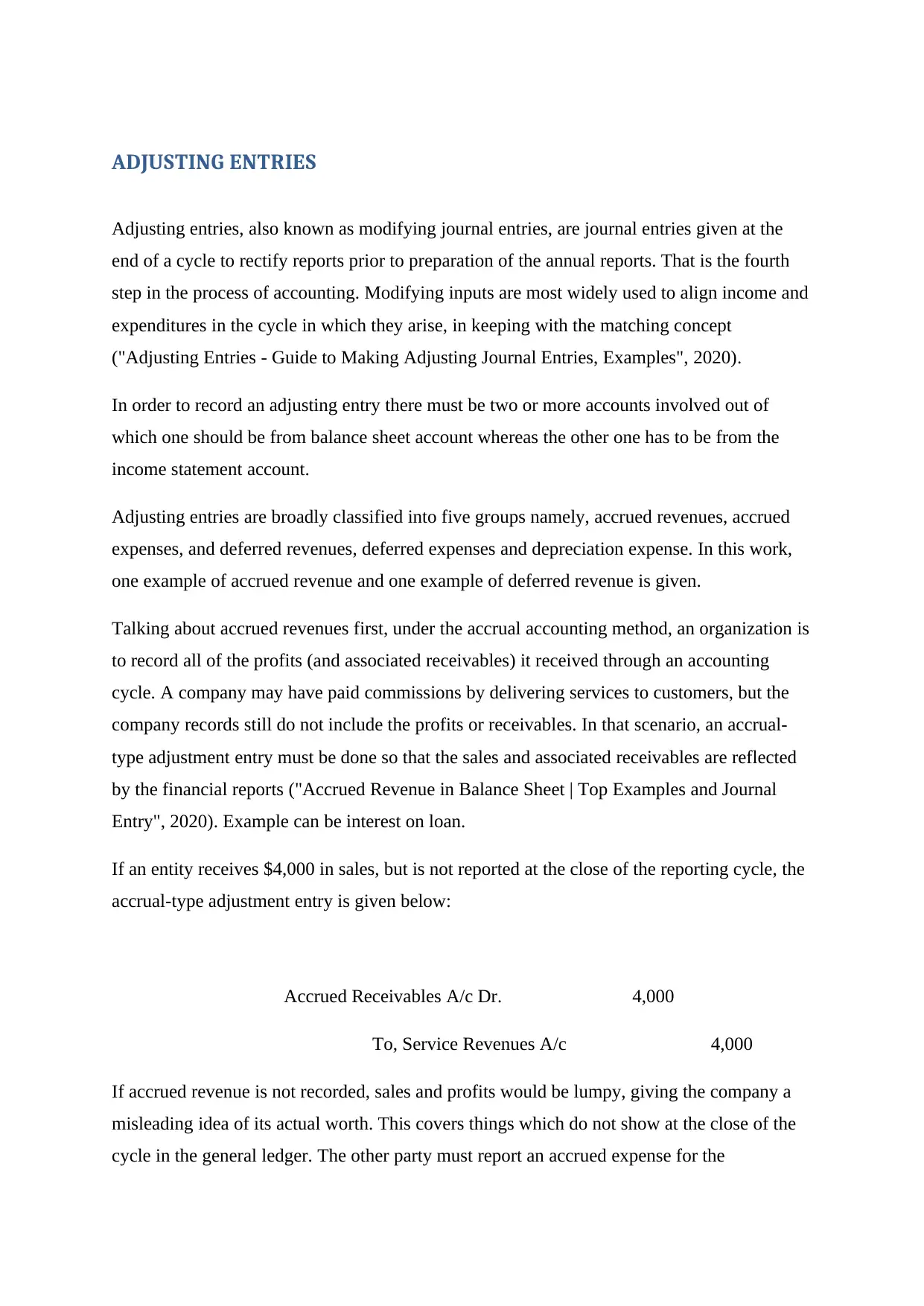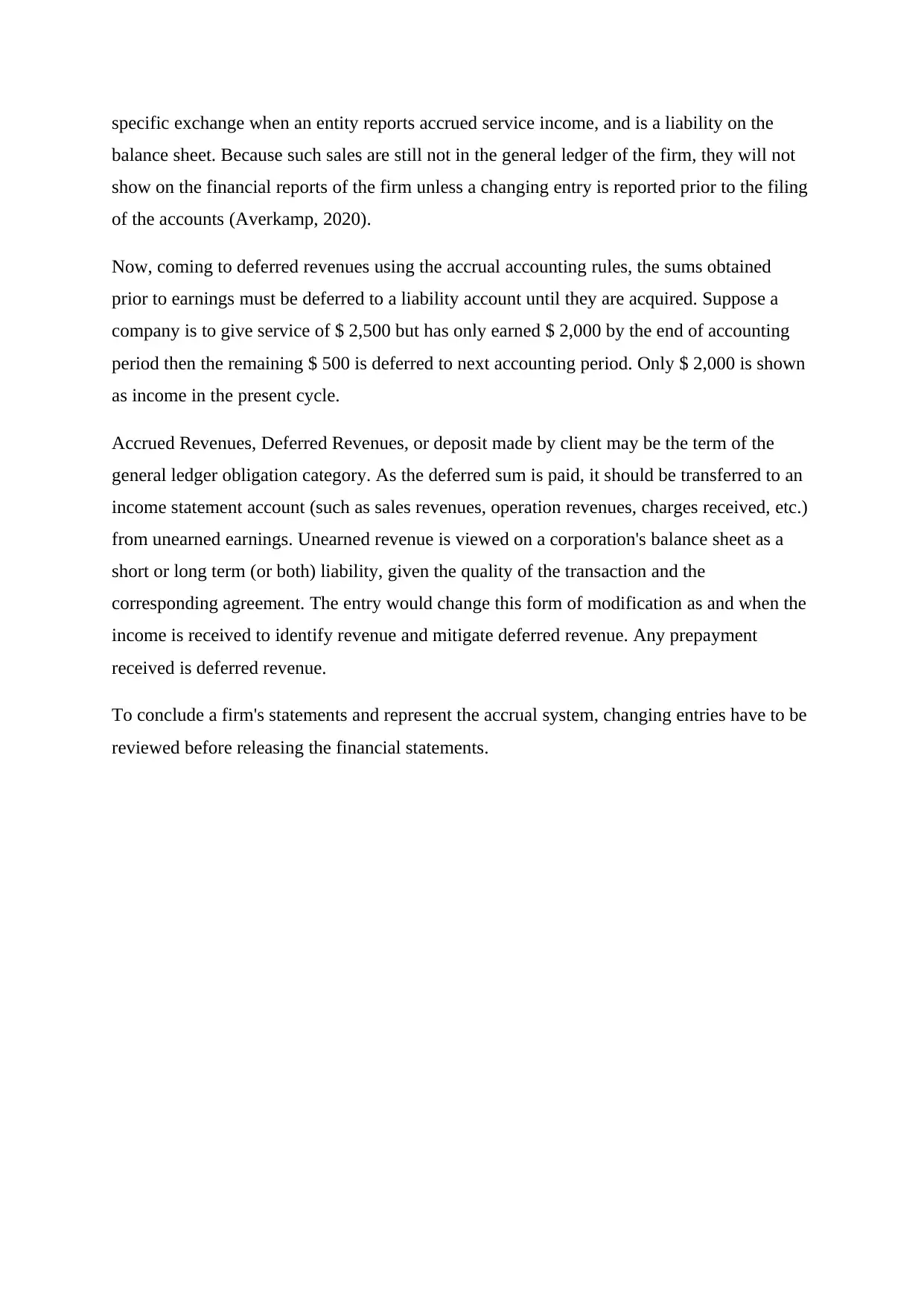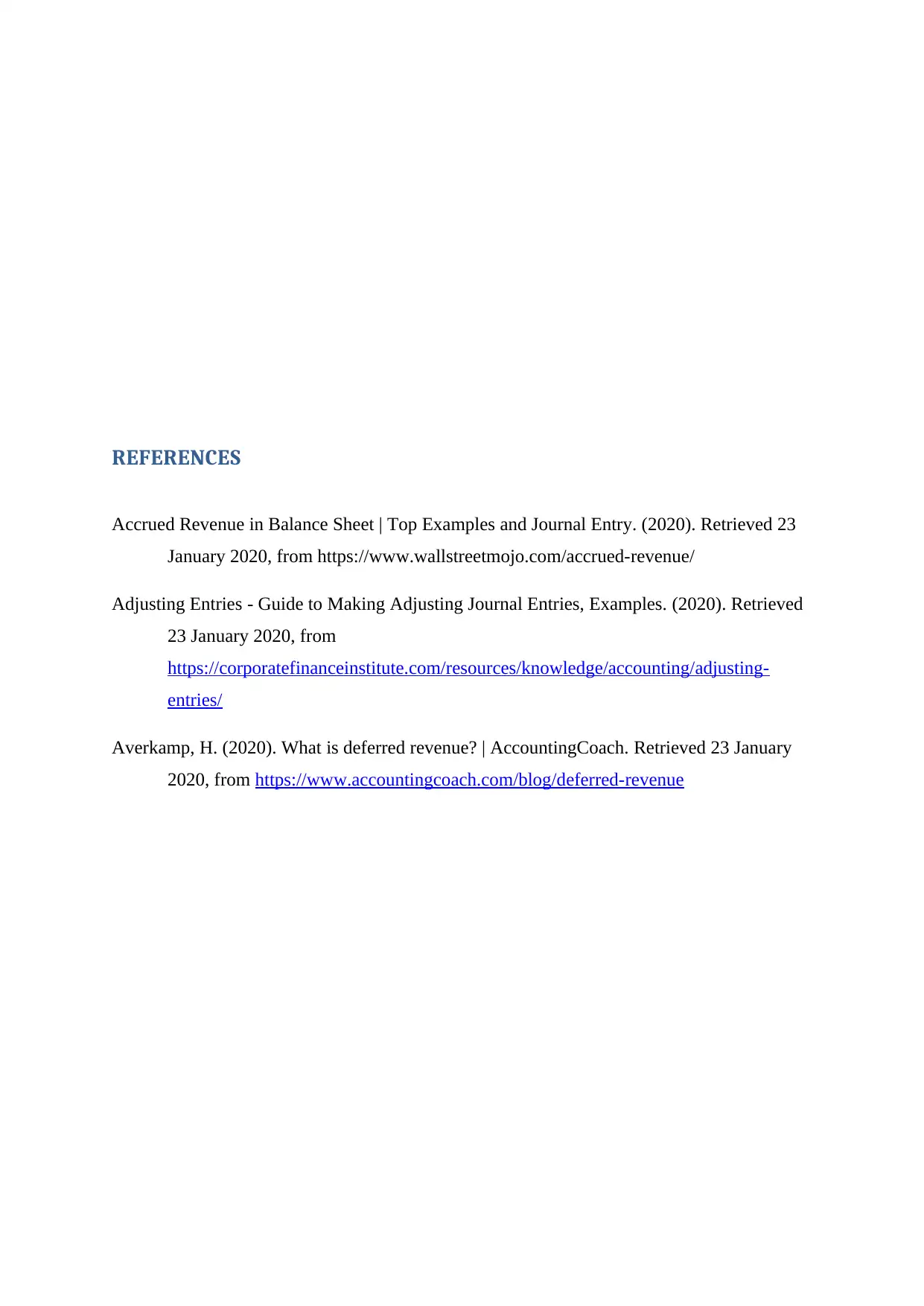Analysis of Adjusting Entries: Accrued and Deferred Revenue Examples
VerifiedAdded on 2022/08/23
|3
|727
|21
Homework Assignment
AI Summary
This homework assignment provides a comprehensive overview of adjusting entries in accounting. It explains the purpose of adjusting entries, which are crucial for aligning revenues and expenses within the correct accounting cycle, adhering to the matching concept. The assignment focuses on two key types of adjusting entries: accrued revenue and deferred revenue. Accrued revenue is explained with an example of interest on a loan, detailing how to record it when services are delivered but not yet billed, ensuring accurate representation of sales and receivables. Deferred revenue is also discussed, outlining how payments received before services are rendered are recorded as liabilities until earned. An example is provided, illustrating how to recognize revenue over time as services are performed. The importance of adjusting entries in preparing accurate financial statements is emphasized, ensuring that financial reports reflect the accrual accounting method correctly. References to relevant sources are included.
1 out of 3










![[object Object]](/_next/static/media/star-bottom.7253800d.svg)